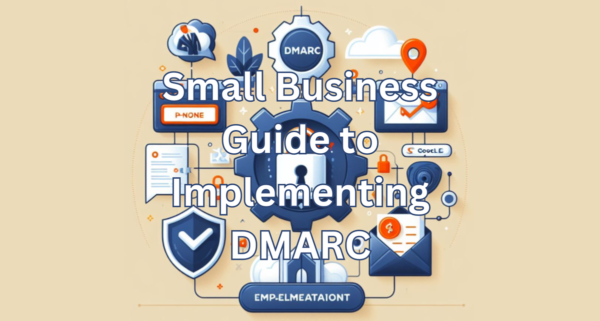Gone are the days when buying a new domain and sending email was a simple task. Now a days email authentication is crucial for safeguarding your business from phishing attacks, email fraud and brand reputation. Starting February 2024, Google and Yahoo will require bulk senders to implement DMARC to enhance email security, this will impact senders both large and small. DMARC (Domain-based Message Authentication, Reporting, and Conformance) is a powerful tool that adds an extra layer of protection to your email communications. Let’s take a look at the basics of DMARC implementation without delving too deep into technical jargon.
DMARC is a protocol that enables domain owners to authenticate their emails, ensuring recipients can verify the legitimacy of the sender. By implementing DMARC, you not only protect your brand reputation but also reduce the likelihood of phishing attacks that can harm your business. You’ll also gain valuable insight into your brands email program and how well you’ve configured your authentication records.
A little history
Before we start a quick review of how we got here by explaining what Sender Policy Framework (SPF) and DomainKeys Identified Mail (DKIM) are. SPF works by allowing domain owners to specify which mail servers are authorized to send emails on behalf of their domain. When an email is received, the recipient’s mail server checks the SPF record in the DNS to verify the sender has approved the server or network as a valid source of their email.
DKIM, on the other hand, involves digitally signing outgoing emails using cryptographic keys, with the public key published in the DNS. Upon receiving an email, the recipient’s mail server can then validate the signature using the public key, ensuring the email’s integrity and authenticity.
When SPF and DKIM are implemented alongside DMARC, they provide a robust email authentication framework. DMARC acts as a policy layer that specifies how receivers should handle emails that fail SPF and DKIM checks, allowing domain owners to request that the recipient domains monitor, quarantine, or reject unauthorized emails, thereby fortifying the overall security of email communications.
Creating DMARC Records
Implementing a very simple and basic DMARC record involves creating DNS (Domain Name System) records, which act as a set of instructions for email receivers. The most basic record includes three key elements of a DMARC record include the policy, RUA (Aggregate Reporting URI), and version tags. These records are generally managed by your DMARC vendor, not your ESP or Mailbox provider. The DMARC vendor will also give you the opportunity to configure reporting email addresses to receive daily reports about your domains progress related to SPF/DKIM passing or failing. This information can them be used to correct bad authentication or adjust your policy to potentially block spoofing of your domain.
What’s are the basics of a DMARC record?
- Policy Tag: The policy tag, denoted as “p,” specifies the action the email receiver should take when an email fails DMARC authentication. Start with “p=none” to monitor without enforcement, then progress to “p=quarantine” for potential threats, and finally, reach “p=reject” to block unauthorized emails.
- RUA Tag: The RUA tag designates the URI where aggregate reports about DMARC authentication results are sent. These reports provide valuable insights into the sources of unauthorized emails, helping you fine-tune your email security.
- Version Tag: The version tag, represented by “v,” indicates the DMARC protocol version in use. For the latest version, use “v=DMARC1.”
A basic record will ultimately look something like this when your ready to publish it:
_dmarc.domain.com IN TXT “v=dmarc1; p=none; rua=mailto:RUA@DMARCVendor.com”There are several other flags within the DMARC standard that deal with things like the type of report you what to receive, the frequency, alignment choices, and more. Most of these are optional and left out of this post on purpose. Your vendor can explain these in more detail should you choose to configure these additional settings.
The Implementation Process
- p=none: Monitoring Phase:
– Start by setting your DMARC policy to “p=none” to monitor authentication results without taking any enforcement action.
– Review the aggregate reports received at the RUA URI to identify legitimate and unauthorized sources of email. - p=quarantine: Gradual Enforcement
– Once you are comfortable with the monitoring phase and have identified legitimate sources, progress to “p=quarantine.”
– Emails failing DMARC authentication will now be quarantined, allowing you to filter potential threats without blocking them entirely. - p=reject: Full Enforcement
– When you’re confident in your DMARC implementation and have addressed any issues, set the policy to “p=reject” to reject unauthorized emails outright.
– Ensure your legitimate sources are authenticated correctly to avoid blocking essential communications.
As a small business owner, implementing DMARC is a proactive step toward securing your email communications. With Google and Yahoo making it a requirement for bulk senders starting February 2024, there’s no better time to enhance your email security. By gradually progressing through the DMARC implementation process, you can strike a balance between protection and operational continuity, safeguarding your business and building trust with your customers.


